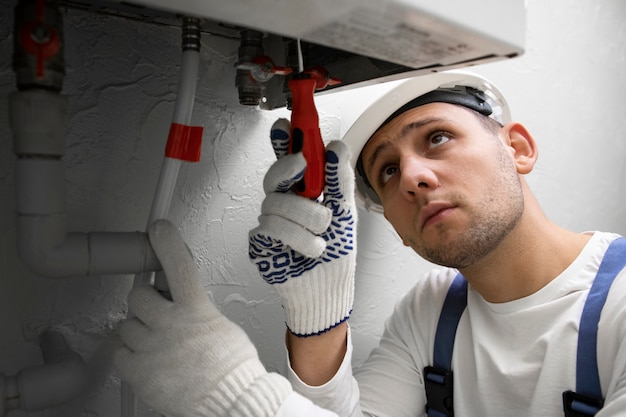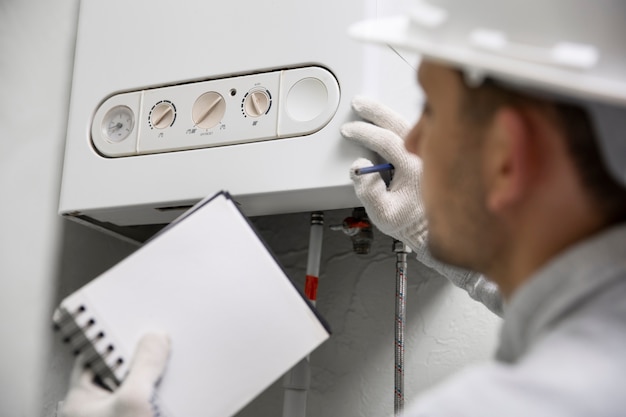Hot Tips For A Cool Home: Mastering Heater Repair In Melbourne
As the chill sets in, the last thing you want is a malfunctioning heater leaving you in the cold. Melbourne, known for its unpredictable weather, demands a reliable heating system to keep homes warm and cozy during the winter months. Heater repair in Melbourne is a common necessity, and mastering the art of troubleshooting and maintenance can save you from shivers and discomfort. In this comprehensive guide, we will explore hot tips to ensure a warm and inviting home by delving into the nuances of heater repair in Melbourne. Discover more insights on Heater Repair Melbourne.
Understanding the Basics:
Before delving into the tips and tricks of heater repair, it's crucial to grasp the basics of how heating systems work. Most homes in Melbourne rely on central heating systems, ducted systems, or split systems. Central heating involves a furnace that heats air, which is then distributed through ducts. Ducted systems utilize vents and ducts to circulate heated air, while split systems have both indoor and outdoor units working in tandem.
Regular Maintenance:
One of the most effective ways to avoid heater malfunctions is to establish a routine maintenance schedule. Regular maintenance not only ensures the efficient performance of your heating system but also extends its lifespan. Tasks like cleaning or replacing filters, checking for leaks, and inspecting the thermostat are essential components of a maintenance routine.
Check and Replace Air Filters:
- Air filters play a pivotal role in the functionality of your heating system.
- Over time, filters accumulate dust and debris, hindering airflow and efficiency.
- Dirty filters can strain the system, leading to higher energy consumption and potential damage.
- Regularly checking and replacing filters, typically every 1-3 months, can prevent these issues and keep your heater running smoothly.

Thermostat Calibration:
The thermostat is the control center of your heating system, dictating when to turn on or off based on the temperature you set. However, it's not uncommon for thermostats to become inaccurate over time. Regularly calibrating your thermostat ensures accurate temperature readings, preventing unnecessary strain on the system and maintaining a comfortable indoor climate.
Investigate Strange Noises:
Unusual sounds emanating from your heating system can be an early warning sign of potential issues. Clanging, banging, or whistling noises may indicate loose or damaged components, requiring prompt attention. Ignoring these sounds can lead to more severe problems and costly repairs. Conducting a thorough investigation into any unusual noises can help identify and address issues promptly.
Pilot Light Inspection:
- For those with gas-powered heating systems, a malfunctioning pilot light can be a common problem.
- If you notice that the pilot light is not lit or has a weak flame, it could be a sign of issues with the thermocouple or gas supply.
- Carefully follow the manufacturer's instructions to relight the pilot light, but if problems persist, it's advisable to seek professional assistance to avoid potential safety hazards.
Bleed Radiators in Hydronic Systems:
Hydronic heating systems, commonly found in Melbourne homes, utilize radiators to distribute heat. If you notice cold spots or inconsistent heating, it may be due to trapped air in the system. Bleeding the radiators releases trapped air, allowing hot water to flow freely and ensuring uniform heating throughout your home. Remember to turn off the heating system before attempting to bleed the radiators.

Inspect Ducts for Leaks:
Ducted heating systems rely on a network of ducts to distribute warm air throughout your home. Leaks in the ductwork can lead to energy wastage, reduced efficiency, and uneven heating. Inspect your ducts for visible signs of damage or leaks, such as loose connections or holes. Sealing ductwork with appropriate materials can improve the overall efficiency of your heating system.
Address Ignition Issues:
If your heating system is not turning on, ignition issues may be at play. In gas-powered systems, problems with the ignition system, such as a faulty igniter or pilot light, can prevent the heater from starting. Electric heating systems may encounter issues with the heating element or thermostat. Troubleshooting these ignition problems promptly can prevent prolonged periods without heating.
Professional Inspection and Servicing:
- While many heater issues can be addressed through DIY troubleshooting, some problems require professional expertise.
- Hiring a qualified technician for periodic inspections and servicing is essential to identify potential issues before they escalate.
- Professional maintenance can also improve energy efficiency, reduce the risk of breakdowns, and ensure the safety of your heating system.
Upgrade to Energy-Efficient Systems:
In some cases, repairing an old or outdated heating system may not be cost-effective. Upgrading to a modern, energy-efficient system not only provides better heating performance but also reduces energy consumption and lowers utility bills. Government incentives and rebates may be available for installing energy-efficient heating systems, making it a worthwhile investment for the long term.

Frequently Asked Questions (FAQ)
Q 1. How often should I replace the air filters in my heating system?
It is recommended to check and potentially replace air filters every 1-3 months, depending on factors such as the type of filter, usage, and indoor air quality.
Q 2. Why is thermostat calibration important for my heating system?
Thermostat calibration ensures accurate temperature readings, preventing your heating system from overworking or underperforming. This helps maintain a comfortable and energy-efficient indoor environment.
Q 3. What should I do if I notice strange noises coming from my heater?
Unusual sounds may indicate loose or damaged components. Investigate the source of the noise and, if necessary, consult a professional technician to address the issue promptly.
Q 4. How can I relight the pilot light on my gas-powered heating system?
Refer to the manufacturer's instructions for relighting the pilot light. If you encounter difficulties or if the pilot light continues to go out, it's advisable to seek professional assistance to ensure safety.
Q 5. What is bleeding radiators, and how do I do it in a hydronic heating system?
Bleeding radiators involves releasing trapped air from the system to ensure even heating. Turn off the heating system, locate the bleed valve on each radiator, and use a radiator key to release the trapped air until water flows consistently.

